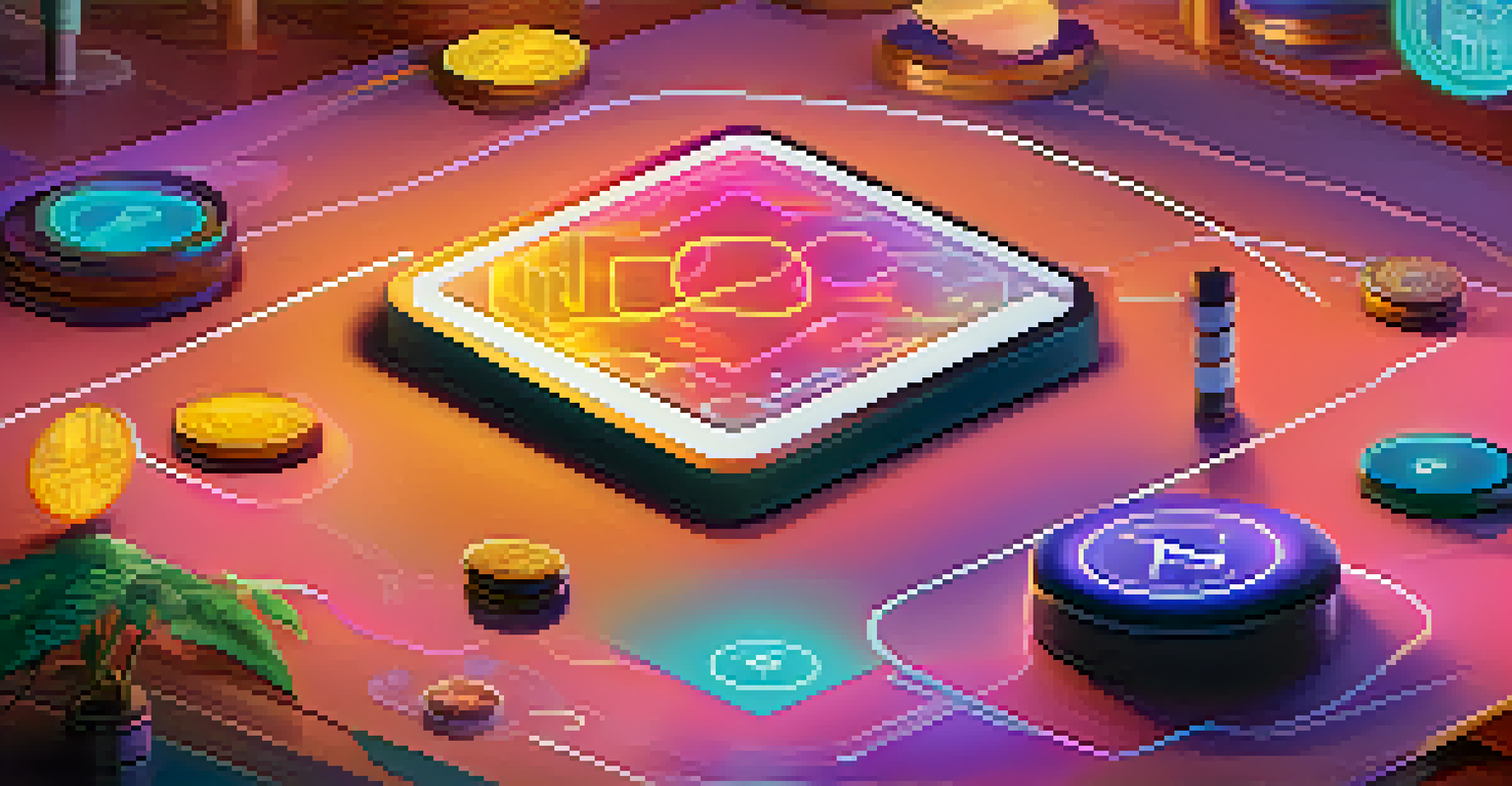Understanding Smart Contracts: The Backbone of NFTs and Blockchain

What Are Smart Contracts and How Do They Work?
Smart contracts are self-executing contracts with the terms of the agreement directly written into code. Imagine them as digital vending machines that automatically deliver a product once the payment is made. They run on blockchain technology, which ensures that the contract is secure, transparent, and tamper-proof.
Smart contracts are the digital equivalent of a handshake, providing a secure and efficient way to execute agreements without the need for intermediaries.
In essence, smart contracts eliminate the need for intermediaries, such as lawyers or notaries, which can save time and reduce costs. They operate on a decentralized network, meaning there’s no single point of failure. This aspect not only enhances security but also builds trust among parties involved.
These contracts are triggered by specific events or conditions being met, which are encoded into the smart contract itself. For example, if you were buying a digital artwork, the smart contract would ensure payment is received before the ownership is transferred. This automation simplifies complex transactions and enhances efficiency.
The Role of Smart Contracts in NFTs
Non-fungible tokens (NFTs) are unique digital assets that represent ownership of a specific item, like digital art or collectibles. Smart contracts play a crucial role in the creation and management of NFTs, as they define the ownership and transfer rules. Think of smart contracts as the rules of a game, ensuring fairness and clarity in transactions.

When an NFT is minted, a smart contract is created to establish its unique properties and provenance. This contract contains essential information about the NFT, such as its creator, ownership history, and any royalties due on future sales. As a result, buyers can confidently purchase NFTs, knowing the terms are clear and secure.
Smart Contracts Automate Transactions
Smart contracts function like digital vending machines, executing agreements automatically without the need for intermediaries.
Moreover, smart contracts allow for programmable features, enabling creators to earn royalties automatically every time their NFT is sold. This innovation empowers artists and creators, ensuring they receive ongoing compensation for their work, which is a game-changer in the digital art space.
Advantages of Using Smart Contracts
One of the most significant advantages of smart contracts is their ability to reduce the risk of fraud. Because transactions are recorded on a blockchain, they are immutable and verifiable by all parties. This level of transparency means that once a contract is executed, it cannot be altered, which greatly enhances trust.
The future of money is digital currency, and smart contracts are the backbone of this transformation.
Additionally, smart contracts increase efficiency by automating processes that would typically require human intervention. This automation not only speeds up transactions but also eliminates human errors, ensuring that agreements are fulfilled exactly as intended. Imagine how much smoother a real estate transaction could be if all the paperwork were handled digitally and automatically.
Finally, smart contracts can lead to cost savings. By cutting out intermediaries and streamlining processes, parties can save on fees and reduce the overall complexity of transactions. This democratization of access can make technology more inclusive, allowing more people to engage in digital economies.
Challenges and Limitations of Smart Contracts
Despite their benefits, smart contracts are not without challenges. One major issue is the quality of the code; if there are bugs or vulnerabilities, it can lead to significant financial losses. Think of it like a software glitch that could cause a bank error—it's crucial to ensure that the code is thoroughly tested before deployment.
Another challenge is the legal recognition of smart contracts. While they are gaining traction, many jurisdictions still struggle to define and enforce them within existing legal frameworks. This ambiguity can create uncertainty for parties relying on these contracts, making it essential to stay informed about legal developments.
NFTs Rely on Smart Contracts
Smart contracts are essential for defining ownership and transfer rules for NFTs, ensuring transparency and security in digital art transactions.
Finally, the complexity of some transactions may exceed the capabilities of current smart contracts. While they excel in straightforward agreements, more intricate arrangements may require additional oversight or even manual intervention. As technology evolves, so too will the potential for more sophisticated smart contracts.
Smart Contracts and Blockchain Technology
Smart contracts are intrinsically linked to blockchain technology, as they rely on it for their functionality. Blockchain acts as a distributed ledger that records all transactions, ensuring that the data is secure and accessible to all parties. Picture blockchain as a public library where everyone can see the books (or transactions), but no one can alter them.
The decentralized nature of blockchain means that there’s no single point of failure, which enhances security against hacks or fraud. Each transaction must be verified by multiple nodes in the network, making it exceedingly difficult for malicious actors to manipulate the system. This foundation of trust is what enables smart contracts to operate effectively.
Moreover, blockchain technology allows for greater interoperability between different platforms and applications. As more industries begin to adopt smart contracts, this connectivity can lead to new opportunities and innovations, making it an exciting area to watch in the coming years.
Real-World Applications of Smart Contracts
Smart contracts have already begun to revolutionize various sectors beyond just NFTs and digital art. For instance, in supply chain management, smart contracts can automate processes such as inventory tracking and payment release upon delivery. Imagine a world where shipments are automatically logged and payments are triggered without any manual intervention.
In the finance sector, smart contracts facilitate peer-to-peer lending, enabling individuals to lend and borrow without traditional banks. This system reduces reliance on intermediaries while providing more favorable terms for both parties. It’s akin to borrowing a cup of sugar from a neighbor instead of going to a store—more personal and often more beneficial.
Future Growth of Smart Contracts
The integration of smart contracts with advancements in blockchain and AI promises a more efficient and secure digital economy.
Furthermore, real estate transactions can also benefit from smart contracts by simplifying the buying and selling process. By digitizing property deeds and automating escrow services, buyers and sellers can close deals faster and with fewer complications. This streamlining can lead to increased trust and satisfaction in real estate dealings.
The Future of Smart Contracts in the Digital Economy
As we look ahead, the future of smart contracts seems bright, especially with the continuous evolution of blockchain technology. With more industries recognizing their potential, we can anticipate an increase in the adoption of smart contracts across various fields. It's like a snowball effect—once it starts rolling, it gains momentum quickly.
Moreover, advancements in artificial intelligence and machine learning could enhance smart contracts, allowing them to adapt and learn from their interactions. Imagine smart contracts that can negotiate terms based on market conditions or user behavior, making them even more efficient and user-friendly.

Ultimately, the integration of smart contracts into everyday transactions could lead to a more transparent, efficient, and secure digital economy. As we embrace this technological shift, it’s essential to stay informed and adapt to the changes that come with it, ensuring we maximize the benefits of this innovative approach.